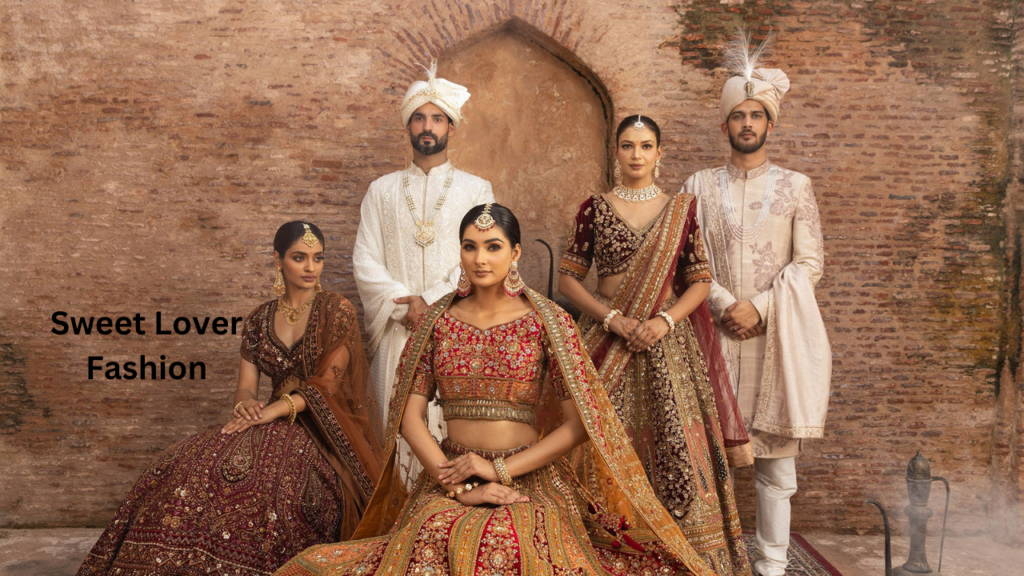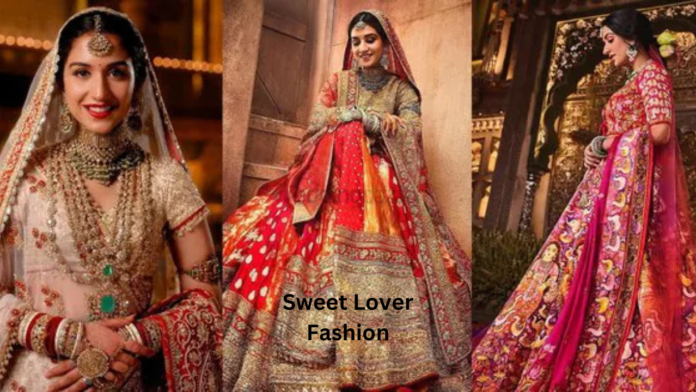Your wedding day is one of the most significant events in your life, and choosing the perfect Indian wedding dress is a crucial part of the celebration. Indian weddings are known for their grandeur, colors, and rich traditions, and the bridal attire plays a central role in these cultural celebrations. Finding the ideal dress can be a bit overwhelming, with so many styles, colors, and fabrics to choose from. This guide will walk you through everything you need to consider to select the perfect Indian wedding dress for your big day.
Understanding the Cultural Significance of an Indian Wedding Dress
In Indian culture, a wedding dress isn’t just a piece of clothing; it’s a reflection of family traditions, regional customs, and religious values. The Indian wedding dress holds deep symbolic meaning, representing the bride’s transition into a new phase of life. Whether you choose a traditional red lehenga or a modern pastel saree, your attire will likely embody significant cultural symbolism, making it essential to select a dress that feels personally meaningful.
While modern brides often explore contemporary trends, many still choose to honor tradition by wearing colors and styles that have been passed down through generations. Striking the right balance between tradition and your personal style is key.

Popular Styles of Indian Wedding Dresses
Indian bridal fashion offers a variety of stunning styles, each with its own charm and significance. Here are some popular options:
1. Lehenga
The lehenga is a timeless favorite for Indian brides. This outfit consists of a heavily embroidered skirt, blouse (choli), and a matching dupatta (veil). Its voluminous and elegant design makes it perfect for grand weddings, and it offers endless customization options in terms of embroidery, fabric, and color.
2. Saree
A saree is a long piece of fabric that is draped gracefully around the body. Known for its elegance and versatility, sarees are a popular choice for brides who want to combine tradition with simplicity. You can choose from a variety of fabrics such as silk, chiffon, and georgette, depending on the look you want to achieve.
3. Anarkali
For brides looking for a mix of traditional and modern, the Anarkali gown is a beautiful choice. This floor-length, flared dress creates a regal, feminine silhouette and is often paired with intricate embroidery and a dupatta. The Anarkali offers both comfort and elegance, making it suitable for wedding ceremonies and receptions.
4. Sharara or Gharara
Shararas and ghararas are becoming increasingly popular among Indian brides, especially for those who want a royal, Mughal-inspired look. These outfits feature wide-legged pants paired with a long kurta and dupatta. Their structured, regal look makes them perfect for brides who want to make a bold statement.
Factors to Consider When Choosing Your Indian Wedding Dress
When choosing your Indian wedding dress, there are several factors to keep in mind to ensure that it not only looks beautiful but also complements your overall wedding theme and setting.
Your Body Type
Understanding your body type is essential for choosing a flattering silhouette. A-line lehengas work well for most body shapes, while sarees can be draped in various ways to accentuate your curves. Try on different styles to see what enhances your figure and makes you feel your best.
Wedding Theme and Venue
The venue and theme of your wedding can influence your dress choice. For example, if you’re having an outdoor, daytime wedding, a lightweight saree or georgette lehenga would be ideal. For a more formal, indoor setting, you might opt for heavier fabrics like velvet or silk.
Time of Year and Climate
The season and climate should also factor into your decision. Summer weddings call for breathable fabrics like chiffon and georgette, while winter weddings allow for heavier options like silk and velvet that add warmth and luxury to your outfit.
The Importance of Colors in Indian Bridal Wear
Color is one of the most defining features of an Indian wedding dress. Traditionally, brides wear red, as it symbolizes prosperity, love, and happiness. However, modern brides are increasingly experimenting with colors like pastel pinks, gold, and even bold hues like blue and green.
The choice of color often depends on regional customs, personal preference, and the overall theme of the wedding. While red remains a classic choice, don’t hesitate to explore other shades that resonate with your personality.
Fabric Choices for Indian Bridal Dresses
The fabric of your Indian wedding dress will affect its overall look and comfort. Here are some popular fabric choices:
Silk
Silk is a traditional favorite for Indian brides due to its luxurious feel and rich appearance. It’s perfect for formal, indoor weddings and provides a sense of timeless elegance.
Georgette and Chiffon
These lightweight, flowy fabrics are ideal for outdoor weddings or summer celebrations. They’re comfortable to wear for long hours and offer a more contemporary, ethereal look.
Velvet
Velvet is a rich, textured fabric that adds a royal touch to any bridal outfit. It’s perfect for winter weddings and works well for brides who want a glamorous, opulent look.
Embellishments and Embroidery: Adding the Wow Factor
An Indian wedding dress is often adorned with intricate embellishments and embroidery, adding to its beauty and uniqueness. Some popular embellishments include:
- Zari: Gold or silver threadwork that adds a luxurious touch.
- Mirror work: Reflective embellishments often seen in Gujarati and Rajasthani outfits.
- Beadwork and sequins: Add a touch of glamour to your bridal ensemble.
These details can elevate the dress and make it truly special, so consider choosing embellishments that align with the level of opulence you’re aiming for.
Customization: Making the Dress Truly Yours
Customization is a great way to make your Indian wedding dress one of a kind. Whether you’re incorporating heirloom elements, such as vintage jewelry or hand-embroidered symbols, or simply altering the neckline and sleeves, customizing your dress allows you to add a personal touch that reflects your individuality.
Balancing Tradition and Modernity
Today’s Indian brides often blend tradition with modern elements to create a look that’s uniquely theirs. You might choose a traditional lehenga in a non-traditional color, or opt for a saree draped in a modern style. The key is to find a balance between respecting your heritage while expressing your personal taste.
How to Complement Your Wedding Dress with Accessories
No Indian wedding dress is complete without the right accessories. Here are a few crucial factors to think about:
Jewelry
Traditional Indian bridal jewelry includes pieces like the maang tikka (forehead ornament), jhumkas (earrings), necklaces, and bangles. Choose jewelry that complements the style and color of your dress without overpowering it.
Footwear
Comfortable footwear is crucial, as you’ll be wearing it for several hours. Traditional juttis (flat shoes) or sandals work well, but ensure they match your dress style and don’t compromise comfort.
Dupatta or Veil Styling
The dupatta or veil is a significant part of your bridal ensemble. You can drape it in various ways, whether it’s over your head in a traditional manner or stylishly wrapped over your shoulder.
Selecting the Perfect Bridal Hairstyle and Makeup
Your hairstyle and makeup should enhance your Indian wedding dress. For example, an elaborate updo complements a heavy lehenga, while soft waves work well with a flowy saree. Your makeup should also harmonize with your dress color—soft, dewy looks pair beautifully with pastel dresses, while bold, striking makeup suits more vibrant outfits.
Setting a Budget for Your Wedding Dress
Setting a budget for your Indian wedding dress is crucial to avoid overspending. Allocate funds for the dress itself, accessories, and alterations. Decide where to splurge and where to save—for instance, you might spend more on high-quality fabric but save on accessories that are less essential.
When to Start Shopping for Your Indian Wedding Dress
Start shopping for your Indian wedding dress 6-8 months before the wedding. This timeline gives you enough time for multiple fittings and any customizations. Last-minute rushes can be stressful, so give yourself ample time to find the perfect fit.
Where to Shop for Indian Wedding Dresses
You have various options when it comes to shopping for your Indian wedding dress:
- Boutique stores: Offer unique designs and personal service.
- Bridal designers: For custom, high-end creations.
- Online: Convenient for brides who live abroad or want to explore a wide range of options.
FAQs
What is the most popular style of Indian wedding dress?
Can I wear colors other than red for my Indian wedding dress?
What is the best fabric for a summer Indian wedding?
Is it necessary to wear traditional jewelry with my Indian wedding dress?
Read more: From Runway to Street: How to Nail High-Fashion Looks on a Budget
Conclusion
Choosing the perfect Indian wedding dress is a journey that requires thoughtful consideration of cultural significance, personal style, and practicality. Whether you go for a traditional lehenga, a graceful saree, or a regal Anarkali, the right dress will make you feel confident and beautiful on your special day. Enjoy the process, and remember, the most important thing is that you feel comfortable and radiant in whatever you choose.


